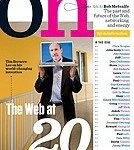Oct05
Getting CEOs on Board with Social Media: World Business Forum #wbf10
Point: Make social media relevant to CEOs by showing how it can help achieve corporate goals.
Story: Charlene Li, co-author of bestselling Groundswell: Winning in a World Transformed by Social Technologies and Open Leadership, spoke at the World Business Forum in New York City on October 5, 2010. Before the conference, I had the chance to ask Charlene if she had any tips for convincing the C-suite of the value of social media. Her answer: “Traditional  ROI is not the way to go yet. Instead, ask the CEO his or her goals for the year. Then, put social media in the context of that, explaining how social media can help them achieve those goals.”
ROI is not the way to go yet. Instead, ask the CEO his or her goals for the year. Then, put social media in the context of that, explaining how social media can help them achieve those goals.”
For example, if one of the CEO’s goals is to increase customer satisfaction, then show the C-suite executives how social media can be used to listen and converse with customers and respond to customer problems. Shoe company Zappos is often mentioned as a paragon of this strategy, but even mainstream companies can use social media successfully. For example, entertainment and communications company Comcast, founded in 1969, uses Twitter (@ComcastCares) to respond to customers tweeting about Comcast problems. In one year, the company handled more than 21,000 customer service requests (official tickets) through social media. Half of those were solved through Twitter, and that figure does not include the thousands of simple inquiries which Comcast customer service reps have responded to on their own. Frank Eliason, Director of Digital Care at Comcast, also sees Twitter as a great early warning system.
Another important point Charlene made was that CEOs are often hungry for hearing what customers are saying about their company, especially because they’re often removed from those direct conversations. Social media monitoring tools give executives an opportunity to listen in. The CMO of Best Buy, for example, put a big plasma screen up on his wall to see all the mentions of Best Buy. “It’s powerful to be so connected to what your customers are saying,” Li said.
Action
- Ask top executives about their top goals for the company
- Cast social media strategy and benefits in terms of addressing those strategic goals
- Show executives how social media can give them the pulse of the customer and a deeper connection to the marketplace.
For Further Information:
Twitter Success Stories, MarketingProfs 2009.
Charlene Li, Open Leadership: How Social Technology Can Transform the Way You Lead












